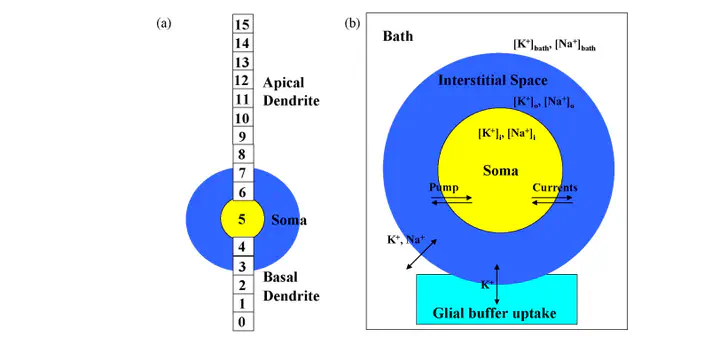
Abstract
Some neuronal receptors perceive external input in the form of hybrid periodic signals. The signal detection may be based on the mechanism of vibrational resonance, in which a system’s response to the low frequency signal can become optimal by an appropriate choice of the vibration amplitude of HFS. The vibrational resonance effect is investigated in a neuron model in which the intra- and extra-cellular potassium and sodium concentrations are allowed to evolve temporally, depending on ion currents, Na(+)-K(+) pumps, glial buffering, and ion diffusion. Our results reveal that, compared to the vibrational resonances in the model with constant ion concentrations, the significantly enhanced vibrational multi-resonances can be observed for the single neuron system where the potassium and sodium ion concentrations vary temporally. Thus, in contradiction to a popular view that ion concentrations dynamics play little role in signal detection, we indicate that the neuron’s response to an external subthreshold signal can be largely improved by sodium and potassium dynamics.